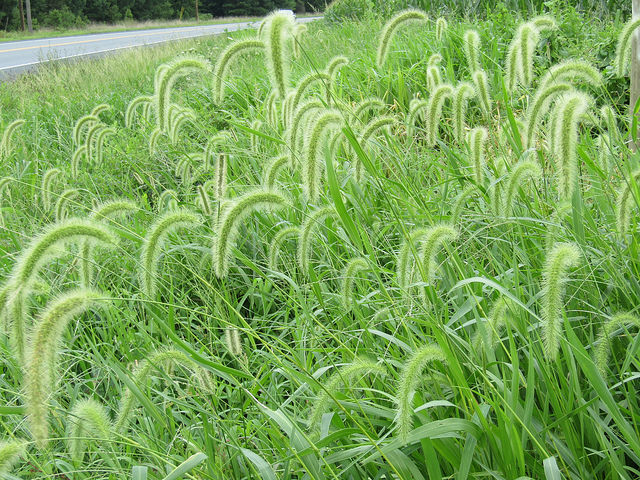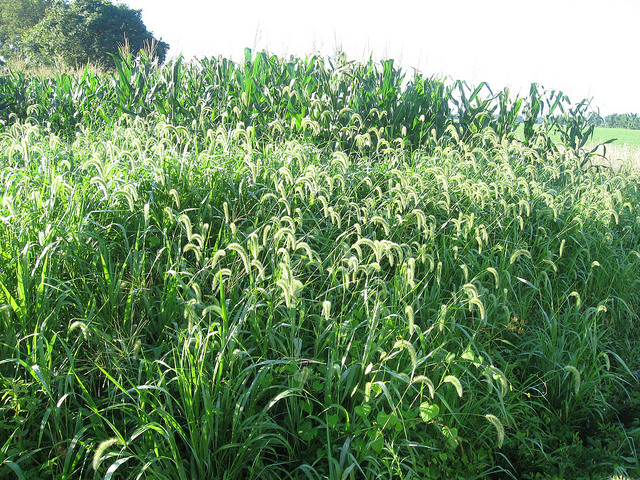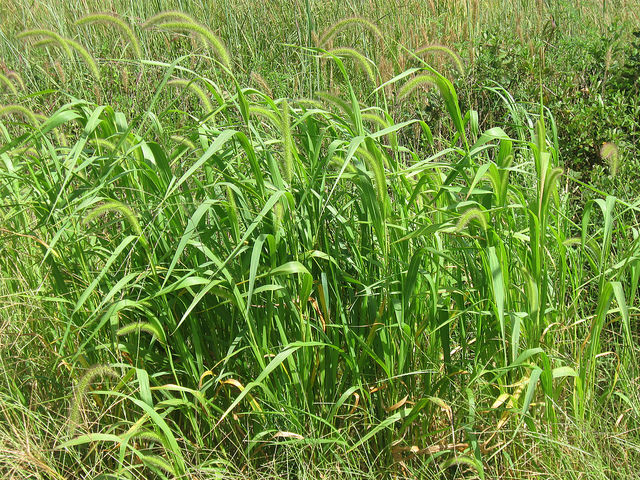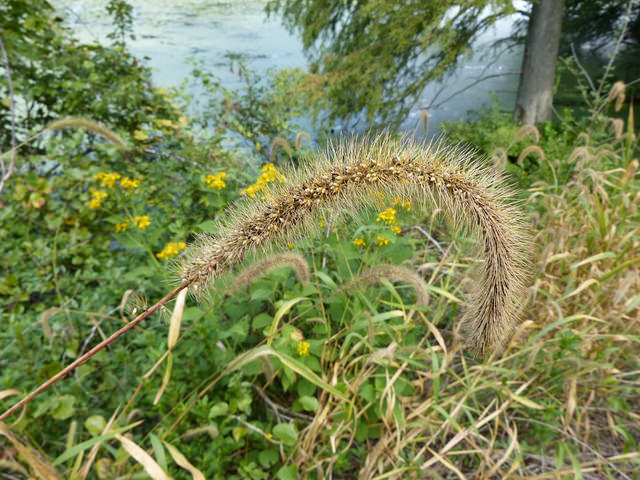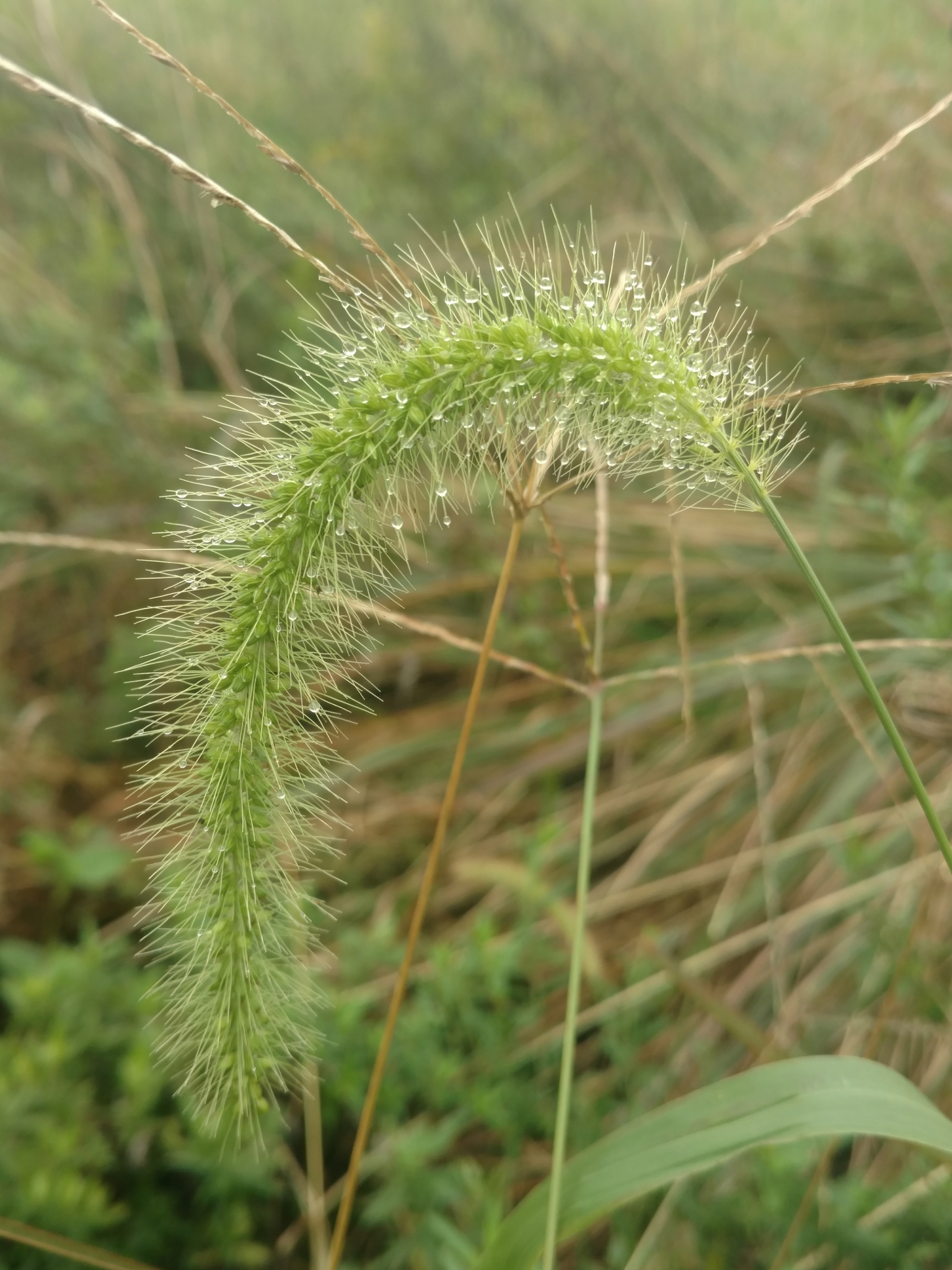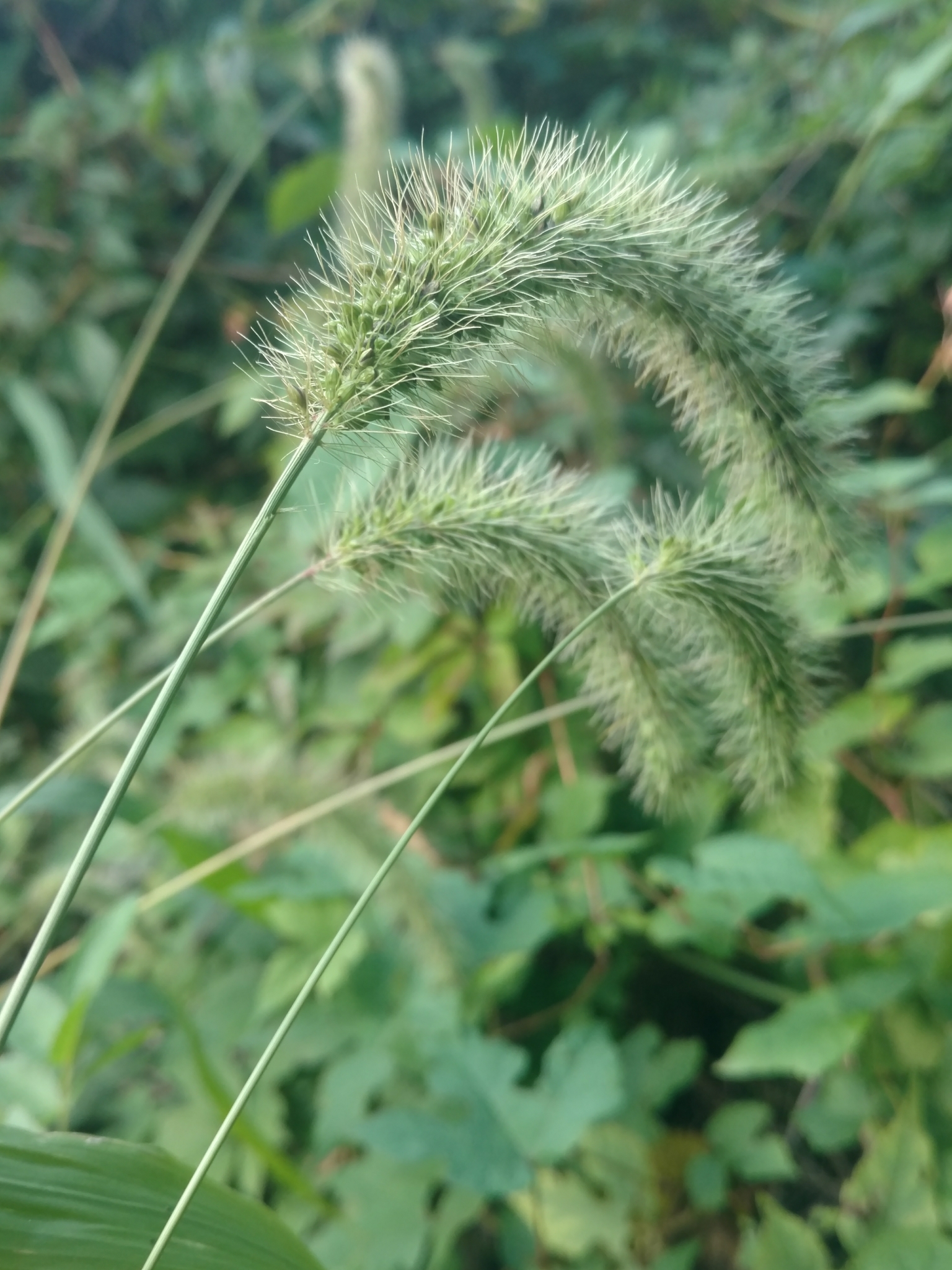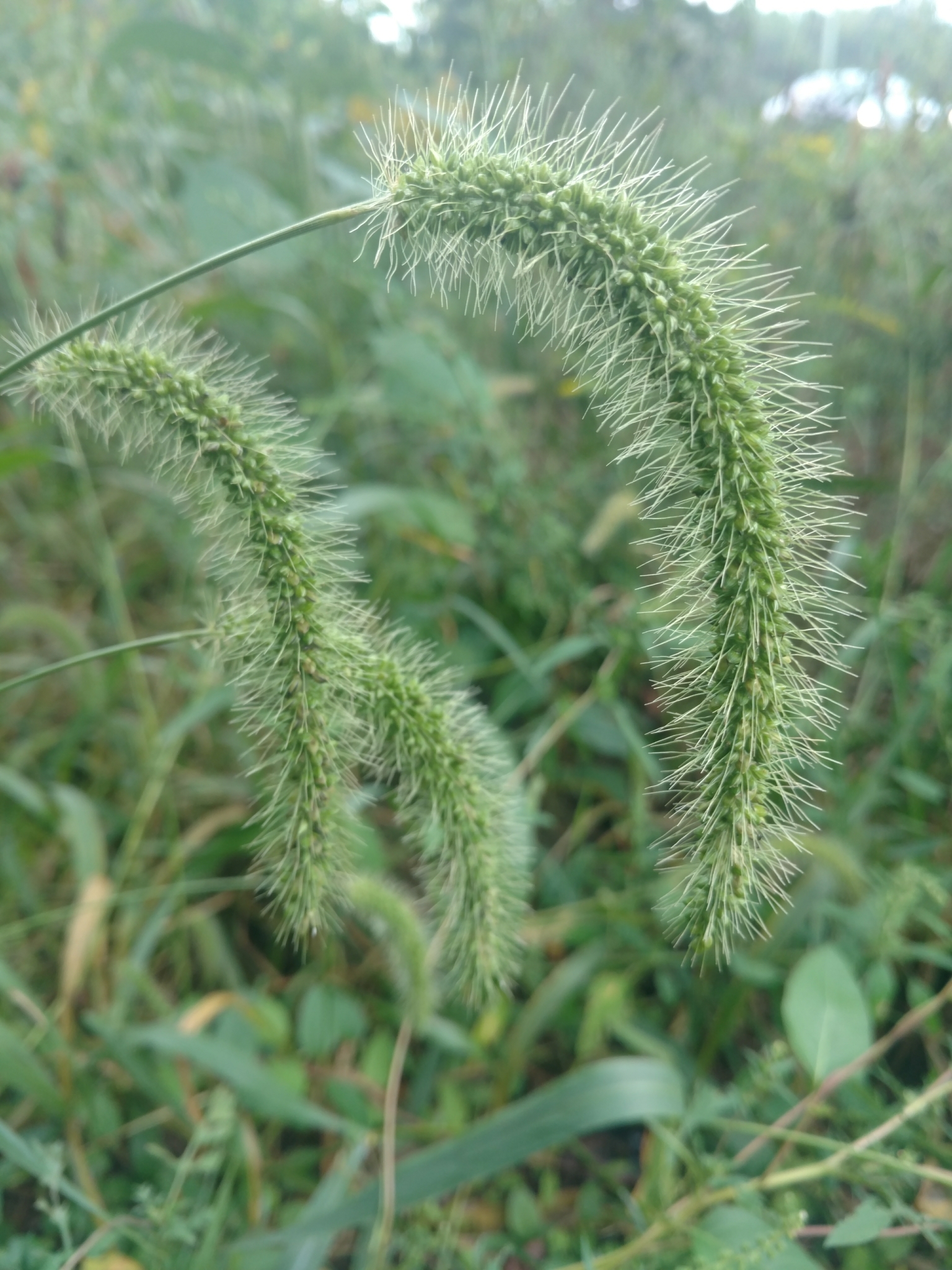Map Snapshot

























500 Records
Status
Japanese Bristlegrass is a common non-native grass of open weedy habitats across most of Maryland. It was introduced to the United States in the 1920s, and has since become established over much of the United States. It is considered a serious pest by corn producers.
Description
Not easily confused with other Maryland grasses. The large nodding bright green seedheads are distinctive.
Where To Find
Roadsides and other open weedy areas.
Relationships
An important food source for many seed eating birds during the cooler months.
Seasonality Snapshot
Source: Wikipedia
| Setaria faberi | |
|---|---|
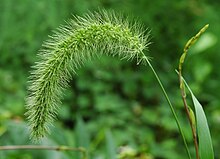
| |
| Scientific classification | |
| Kingdom: | Plantae |
| Clade: | Tracheophytes |
| Clade: | Angiosperms |
| Clade: | Monocots |
| Clade: | Commelinids |
| Order: | Poales |
| Family: | Poaceae |
| Subfamily: | Panicoideae |
| Genus: | Setaria |
| Species: | S. faberi
|
| Binomial name | |
| Setaria faberi | |
| Synonyms[1] | |
| |
Setaria faberi, the Japanese bristlegrass,[2] nodding bristle-grass,[3] Chinese foxtail, Chinese millet, giant bristlegrass, giant foxtail or nodding foxtail, is an Asian grass. It is a summer annual, with plants emerging from seeds in the spring, and setting seeds in the late summer or fall.
Giant foxtails prefer compacted soils, high in nitrogen and phosphorus. The plant gains a competitive edge on crops as the soil pH increases.
As a weed
[edit]Giant foxtail has been introduced to North America, where it is a widespread weed. It is a significant pest of maize/corn, reducing crop yields by 13–14% at average plant distributions. Mechanical control of giant foxtails by night tillage, rotary hoeing, or flaming is very difficult. Crop rotation with two years of alfalfa effectively reduces giant foxtail populations. Herbicides can effectively control the plant when it is growing amongst broadleaf crops, but are less effective when it is infesting maize/corn because they are both Poaceae.[4]
References
[edit]- ^ "The Plant List: A Working List of All Plant Species". Retrieved 13 December 2014.
- ^ NRCS. "Setaria faberi". PLANTS Database. United States Department of Agriculture (USDA). Retrieved 11 November 2015.
- ^ BSBI List 2007 (xls). Botanical Society of Britain and Ireland. Archived from the original (xls) on 2015-06-26. Retrieved 2014-10-17.
- ^ A. Davis, K. Renner, C. Sprague, L. Dyer, D. Mutch (2005). Integrated Weed Management. MSU.
External links
[edit]




